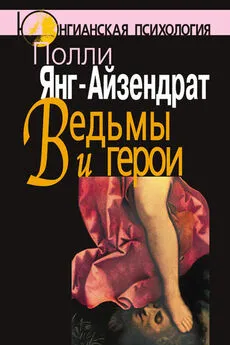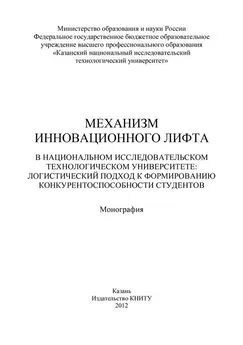Шон Янг - Привычки на всю жизнь [Научный подход к формированию устойчивых привычек]
- Название:Привычки на всю жизнь [Научный подход к формированию устойчивых привычек]
- Автор:
- Жанр:
- Издательство:Манн, Иванов и Фербер
- Год:2018
- Город:Москва
- ISBN:978-5-00117-263-5
- Рейтинг:
- Избранное:Добавить в избранное
-
Отзывы:
-
Ваша оценка:
Шон Янг - Привычки на всю жизнь [Научный подход к формированию устойчивых привычек] краткое содержание
Для всех, кто хочет изменить существующие привычки, приобрести новые и сделать их своей второй натурой.
На русском языке публикуется впервые.
Привычки на всю жизнь [Научный подход к формированию устойчивых привычек] - читать онлайн бесплатно ознакомительный отрывок
Интервал:
Закладка:
‹‹3›› D. J. Bem, Self-perception Theory, Advances in Experimental Social Psychology , ed. Leonard Berkowitz (New York: Academic, 1972).
‹‹4›› Психологи спорят, связано это с когнитивным диссонансом или со взглядами на свое прошлое поведение. Аргументы в пользу первого предположения см.: Leon Festinger, A Theory of Cognitive Dissonance , (Stanford, CA: Stanford University Press, 1957). Аргументы в пользу второго предположения см.: D. J. Bem, Self-Perception: An Alternative Interpretation of Cognitive Dissonance Phenomena, Psychological Review 74 (1967): 183–200.
‹‹5›› Benjamin Franklin, Autobiography of Benjamin Franklin [Edited from His Manuscript] , ed. John Bigelow (Philadelphia: Lippincott, 1868).
‹‹6›› Rosanna E. Guadagno, Adam Lankford, Nicole Muscanell, Bradley Okdie, and Debra McCallum, Social Influence in the Online Recruitment of Terrorists and Terrorist Sympathizers: Implications for Social Psychology Research, Revue Internationale de Psychologie Sociale 23 (2010): 25–56.
‹‹7›› F. M. Haemmerlie and R. L. Montgomery. 1984. Purposefully Biased Interactions: Reducing Heterosocial Anxiety Through Self-Perception Theory, Journal of Personality and Social Psychology 47 (1984): 900–908.
‹‹8›› F. M. Haemmerlie and R. L. Montgomery, Self-Perception Theory and Unobtrusively Biased Interactions: A Treatment for Heterosocial Anxiety, Journal of Counseling, Psychology 29 (1982): 362–370.
‹‹9›› Pablo Brinol and Richard E. Petty, Overt Head Movements and Persuasion: A Self-Validation Analysis, Journal of Personality and Social Psychology 84, no. 6 (2003): 1123–1139.
‹‹10›› Stuart Valins, Cognitive Effects of False Heart-Rate Feedback, Journal of Personality and Social Psychology 4, no. 4 (1966): 400–408, doi: 10.1037/h0023791.
‹‹11›› Stuart Valins, Cognitive Effects of False Heart-Rate Feedback, In Experimental Social Psychology , eds. Chester A. Insko and John Schopler (New York and London: Academic Press, 2013).
‹‹12›› John C. Barefoot and Ronald B. Straub, Opportunity for Information Search and the Effect of False Heart Rate Feedback, Integrative Physiological & Behavioral Science 40, no. 3 (2005): 156–160, doi: 10.1007/BF03159712.
‹‹13›› Marcus A. Gray, Neil A. Harrison, Stefan Wiens, and Hugo D. Critchley, Modulation of Emotional Appraisal by False Physiological Feedback during fMRI, PLoS ONE 2, no. 6 (2007), doi: 10.1371/journal.pone.0000546.
‹‹14›› J. D. Laird, Self-Attribution of Emotion: The Effects of Expressive Behavior on the Quality of Emotional Experience, Journal of Personality and Social Psychology 29 (1974): 475–486.
‹‹15›› Fritz Strack, Leonard L. Martin, and Sabine Stepper, Inhibiting and Facilitating Conditions of the Human Smile: A Nonobtrusive Test of the Facial Feedback Hypothesis, Journal of Personality and Social Psychology 54 (1988): 768–777.
‹‹16›› R. B. Zajonc, Sheila T. Murphy, and Marita Inglehart, Feeling and Facial Efference: Implications of the Vascular Theory of Emotion, Psychological Review 96, no. 3 (1989): 395–416, doi: 10.1037/0033-295X.96.3.395.
‹‹17›› M. Axel Wollmer, Claas de Boer, Nadeem Kalak, Johannes Beck, Thomas Gotz, Tina Schmidt, Muris Hodzic, et al, Facing Depression with Botulinum Toxin: A Randomized Controlled Trial, Journal of Psychiatric Research 46, no. 5 (2012): 574–81, doi: 10.1016/j.jpsychires.2012.01.027.
‹‹18›› Michael B. Lewis and Patrick J Bowler, Botulinum Toxin Cosmetic Therapy Correlates with a More Positive Mood, Journal of Cosmetic Dermatology 8, no. 1 (2009): 24–26, doi: 10.1111/j.1473–2165.2009.00419.x.
‹‹19›› Tiffany A. Ito, Krystal W. Chiao, Patricia G. Devine, Tyler S. Lorig, and John T. Cacioppo, The Influence of Facial Feedback on Race Bias, Psychological Science 17, no. 3 (2006): 256–261, doi: 10.1111/j.1467–9280.2006.01694.x.
‹‹20›› Christopher J. Bryan, Gregory M. Walton, Todd Rogers, and Carol S. Dweck, Motivating Voter Turnout by Invoking the Self, Proceedings of the National Academy of Sciences 108, no. 31 (2011): 1265356, doi: 10.1073/pnas.1103343108.
‹‹21›› Christopher J. Bryan, Gabrielle S. Adams, and Benoit Monin, When Cheating Would Make You a Cheater: Implicating the Self Prevents Unethical Behavior, Journal of Experimental Psychology: General 142, no. 4 (2013): 1001–5, doi: 10.1037/a0030655.
‹‹22›› C. R. Critcher and T. Gilovich, Inferring Attitudes from Mindwandering, Personality and Social Psychology Bulletin 36 (2010): 1255–1266.
‹‹23›› J. P. Brunelle, The Impact of Community Service on Adolescent Volunteers’ Empathy, Social Responsibility, and Concern for Others, The Sciences and Engineering 62 (2001): 2514.
‹‹24›› Improvisational Acting Rules, https://en.wikibooks.org/wiki/Improvisational_Acting/Rules.
‹‹25›› Nancy L. Collins and Lynn Carol Miller, Self-Disclosure and Liking: A Meta-Analytic Review, Psychological Bulletin 116, no. 3 (1994): 457–75, doi: 10.1037/0033-2909.116.3.457.
‹‹26›› C. K. Waterman, The Facilitating and Interfering Effects of Cognitive Dissonance on Simple and Complex Paired Associates Learning Tasks, Journal of Experimental Social Psychology 5 (1969): 31–42.
Глава 7. Увлекательность
‹‹1›› Brad Tuttle, Former ‘Extreme Couponer’ Admits: It’s a Waste of Time, Time , last modified November 5, 2012, http://business.time.com/2012/11/05/former-extreme-couponer-admits-its-a-waste-of-time/.
‹‹2›› Why One Extreme Couponer Gave Up Clipping, National Public Radio, last modified October 30, 2012, http://www.npr.org/2012/10/30/163950605/why-one-extreme-couponer-gave-up-clipping.
‹‹3›› We Are a Coupon Nation, RetailMeNot, Inc., last modified September 8, 2014, http://retailmenot.mediaroom.com/2014-09-08-We-Are-a-Coupon-Nation.
‹‹4›› CPG Digital Coupon Circulation Grows By 23.4 % in 1H16, Reaching 3.7 Billion, Kantar Media, August 15, 2016, http://www.kantarmedia.com/us/newsroom/press-releases/cpg-digital-coupon-circulation-grows-by-23-4-in-1h16.
‹‹5›› Improving Economy, Increasing Shopper Demand for Digital Offers Impacting Coupon Use, Inmar, February 1, 2016, http://www.inmar.com/press-release/improving-economy-increasing-shop-per-demand-for-digital-offers-impacting-coupon-use/.
‹‹6›› Improving Economy, Increasing Shopper Demand for Digital Offers Impacting Coupon Use, Inmar, February 1, 2016, http://www.inmar.com/press-release/improving-economy-increasing-shop-per-demandfor-digital-offers-impacting-coupon-use/.
‹‹7›› Sherri Kuhn, The Wealthy Are More Likely to Use Coupons, Ironically, She Knows, February 10, 2014, http://www.sheknows.com/living/articles/1029861/the-wealthy-are-more-likely-to-use-cou-ponsironically.
‹‹8›› Is Metal Detecting Worth It? Metal Detecting Forum, last modified January 5, 2011, http://metaldetectingforum.com/showthread.php?t=62457.
‹‹9›› Lulu Chang, Americans spend an alarming amount of time checking social media on their phones, Digital Trends, June 13, 2015, http://www.digitaltrends.com/mobile/informate-report-social-media-smartphone-use/.
‹‹10›› Edward Lee Thorndike, Animal Intelligence: An Experimental Study of the Associative Processes in Animals, Psychological Review Monograph Supplement 2 (1901): 1–109.
‹‹11›› Daniel Schacter, Psychology (2nd ed.) (New York: Worth, 2011), 17.
‹‹12›› Top Secret WWII Bat and Bird Bomber Program, History Net, last modified June 12, 2006, http://www.historynet.com/top-secret-wwii-bat-and-bird-bomber-program.htm.
‹‹13›› Bruce K. Alexander, Robert B. Coambs, and Patricia F. Hadaway, The Effect of Housing and Gender on Morphine Self-Administration in Rats, Psychopharmacology 58, no. 2 (1978): 175–79, doi: 10.1007/BF00426903.
‹‹14›› Eryn Paul, «Why Germans Work Fewer Hours But Produce More: A Study in Culture,» KNote, http://knote.com/2014/11/10/why-germans-work-fewer-hours-but-produce-more-a-study-in-culture.
‹‹15›› Kim Witte and Mike Allen, «A Meta-Analysis of Fear Appeals: Implications for Effective Public Health Campaigns,» Health Education & Behavior 27, no. 5 (2000): 591–615, doi: 10.1177/109019810002700506.
‹‹16›› Allison Earl and Dolores Albarracin, «Nature, Decay, and Spiraling of the Effects of Fear-Inducing Arguments and HIV Counseling and Testing: A Meta-Analysis of the Short- and Long-Term Outcomes of HIV-Prevention Interventions,» Health Psychology 26, no. 4 (2007): 496–506, doi: 10.1037/0278-6133.26.4.496.
‹‹17›› Kirk Mitchell, «Limon prison incentive programs keep inmates in check,» The Denver Post , November 14, 2010, http://www.denver-post.com/2010/11/14/limon-prison-incentive-programs-keep-in-mates-in-check/.
‹‹18›› Daniel Kahneman and Angus Deaton, High Income Improves Evaluation of Life but Not Emotional Well-Being, Proceedings of the National Academy of Sciences 107, no. 38 (2010): 16489–93, doi: 10.1073/pnas.1011492107.
‹‹19›› Daniel Kahneman and Angus Deaton, High Income Improves Evaluation of Life but Not Emotional Well-Being, Proceedings of the National Academy of Sciences 107, no. 38 (2010): 16489–93, doi: 10.1073/pnas.1011492107.
‹‹20›› Mark R. Lepper, David Greene, and Richard E. Nisbett, Undermining Children’s Intrinsic Interest with Extrinsic Reward: A Test of The ‘overjustification’ hypothesis, Journal of Personality and Social Psychology 28, no. 1 (1973): 129–37, doi: 10.1037/h0035519.
‹‹21›› Mark R. Lepper and David Greene, The Hidden Costs of Reward (London and New York: Psychology Press, 1978).
‹‹22›› E. L. Deci, R. Koestner, and R. M. Ryan, A Meta-Analytic Review of Experiments Examining the Effects of Extrinsic Rewards on Intrinsic Motivation, Psychological Bulletin 125, no. 6 (1999): 627–668–700.
‹‹23›› Jesse Singal, «Awareness is Overrated, Science of Us, July 17, 2014, http://nymag.com/scienceofus/2014/07/awareness-is-overrated.html.
‹‹24›› National Institute on Drug Abuse, Evaluation of the Office on National Drug Control Policy (ONDCP) National Youth Anti-Drug Media Campaign, 2006, http://archives.drugabuse.gov/initiatives/westat/.
‹‹25›› Carlos D. Sanchez, L. Kristin Newby, Darren K. McGuire, Vic Hasselblad, Mark N. Feinglos, and E. Magnus Ohman, Diabetes-Related Knowledge, Atherosclerotic Risk Factor Control, and Outcomes in Acute Coronary Syndromes, The American Journal of Cardiology 95, no 11 (2005): 1290–1294, doi: 10.1016/j.amjcard.2005.01.070.
Читать дальшеИнтервал:
Закладка:
![Обложка книги Шон Янг - Привычки на всю жизнь [Научный подход к формированию устойчивых привычек]](/books/1096015/shon-yang-privychki-na-vsyu-zhizn-nauchnyj-podhod-k-fo.webp)








